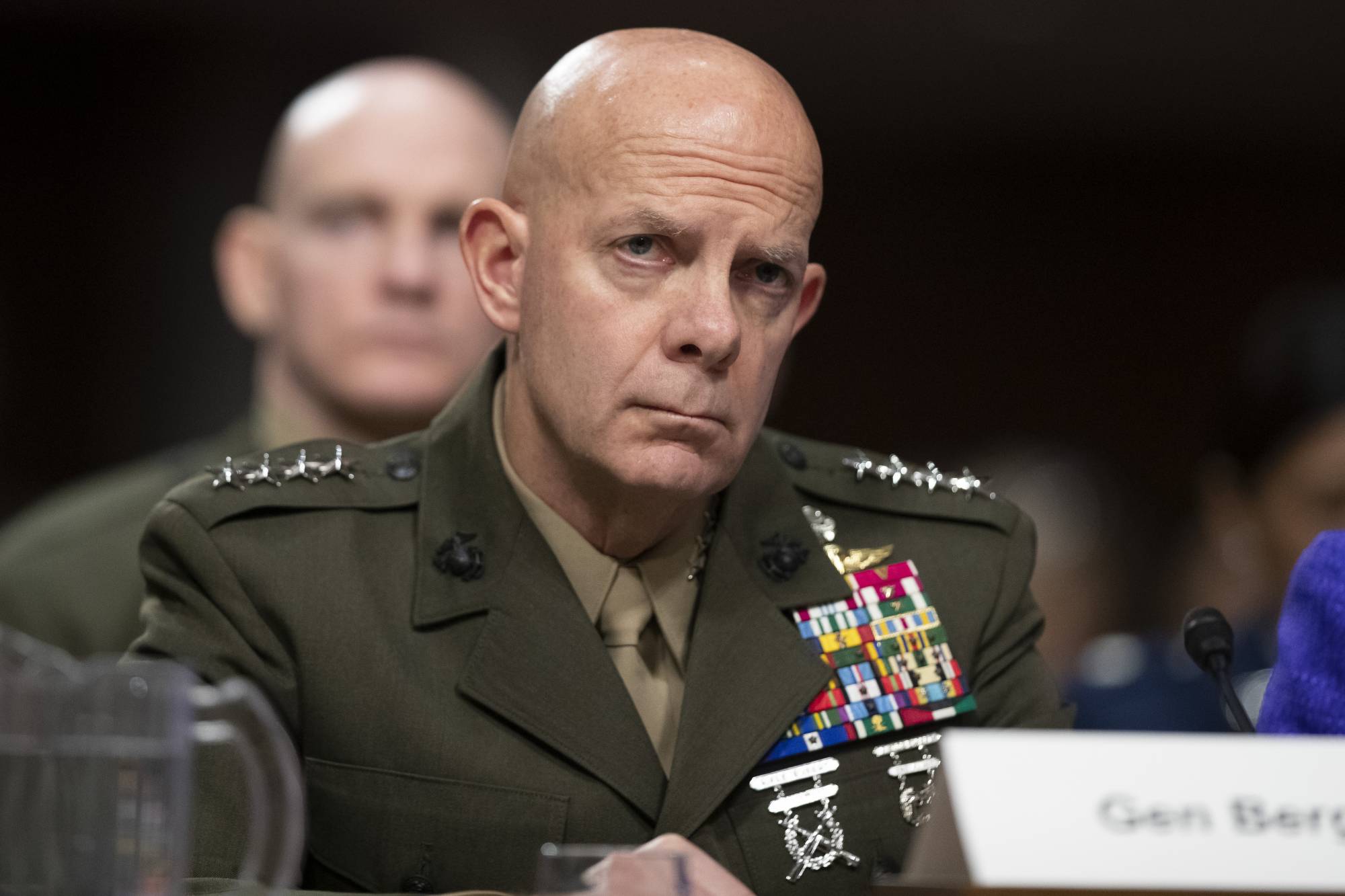Marine Corps expects to transform into new force around 2023
The service expects new capabilities to start coming online in the mid-2020s.
Marine Corps Commandant Gen. David Berger spent the past two years dismantling the Marine Corps the United States has known in the last three or four decades.
Instead, he’s been trying to rebuild a force that is more agile, expeditionary and accepting of a new kind of Marine that brings in a higher level of talent, in order to stay ahead of near-peer competitors.
On Tuesday, Berger said he expects at least part of his plans to come to fruition by 2023.
“Over the last few years, the approach was to divest, or get rid of things that may have been useful in the past, but were not as useful going forward for what we saw as the operating environment of the future,” Berger said at a Center for a New American Security event. “We let go of those things as fast as possible with some acknowledgement of the associated risk divesting of those things.”
That transition left the Marine Corps in a bit of a vulnerable spot. Much like a crustacean molts its shell and waits for its new, stronger shell to harden, the Marine Corps is crab-walking its way into a new force that can quickly counter China and Russia.
Berger says the Marine Corps’ new capabilities will start coming online in 2023, and then continue through the mid-2020s.
“We’re practicing now for how we will operate [in the future],” Berger said. “We are experimenting right now. The material parts, the machinery, the equipment is one part of it. We’re rapidly changing the way that we manage our people and the talent and the way that we train too. Otherwise, all the concepts and capabilities in the world are aren’t going to work with the current systems that we have for how we manage our people and develop them and how we train ourselves.”
Berger has released several strategies in the last year aimed at building a Marine Corps for 2030.
The capabilities the service is looking for focus on expeditionary advanced base operations employing light, mobile capabilities in temporary locations.
That includes modernized infantry gear, like lighter guns and cold resistant boots, as well as advanced communications like lightweight tablet systems and smaller high-frequency radios.
“The Marine Corps is fielding several close combat lethality enhancements to address near-term requirements while working with the Army to pursue the next-generation capabilities for the future,” said Chris Woodburn, of the Capabilities Development Directorate at the Combat Development and Integration, in a May press release. “These enhancements facilitate our close combat forces’ ability to leverage the best capability now, while posturing for the future through continued work with partner services.”
The Marine Corps is still divesting from its old systems to get to its 2030 end state. Berger wants a force that is 12,000 Marines smaller, that divests from tanks and from heavy helicopters.
All of that is to create a force that supports the strengths of the other military branches, but is also able to move fast and lethally.
“Our current force design, optimized for large-scale amphibious forcible entry and sustained operations ashore, has persisted unchanged in its essential inspiration since the 1950s,” Berger wrote in his 2030 strategy. “I am convinced that the defining attributes of our current force design are no longer what the nation requires of the Marine Corps.”
Berger added that the Marine Corps must accomplish its transformation with the resources it has.
“We should be able to discipline ourselves, know how to operate within the family budget that we have,” he said. “The Marine Corps for last two years, and this year will be the same, hasn’t asked for any increase in our budget. Inflation only. Not one dollar more, because we have to be the best stewards of the taxpayers dollar. We have to demonstrate to ourselves that we’re squeezing everything we can out of it.”
Copyright © 2024 Federal News Network. All rights reserved. This website is not intended for users located within the European Economic Area.
Scott Maucione is a defense reporter for Federal News Network and reports on human capital, workforce and the Defense Department at-large.
Follow @smaucioneWFED







